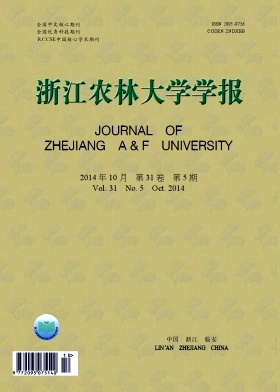-
木棉Bombax malabaricum又名红棉、英雄树(广州)、攀枝花(四川)、斑芝棉、斑芝树(台湾)、攀枝(福建),为木棉科Bombacaceae木棉属Bombax落叶大乔木,广泛分布于中国云南、四川、贵州、广西、江西、广东、福建、台湾等省区[1]:也分布于南亚的印度、尼泊尔和东南亚等地区[2-3]。木棉用途广泛,花大色艳,树形优美,常用于庭院、公园绿化,供行道树、独赏树等。木棉还具有极高的药用价值。清代何克谏《生草药性备要》记载:木棉花性味甘,凉,具有清热利湿,解毒,止血等功效,主治肠炎、泄泻、痔疮出血、细菌性痢疾[4]。现代研究发现,木棉花、根系、叶片及树皮中含有多种活性物质,进一步的动物及临床试验证实,这些活性物质对人体具有多种独特的生理和药理功能[5-7]。此外,木棉果中纤维可作枕、褥、救生圈等填充材料:种子榨油可作润滑油、制肥皂:木材轻软,可用作蒸笼、箱板、火柴梗、造纸等用[1]。迄今为止,相关学者对木棉做了大量研究,但多数集中在药用价值方面,而对其资源培育等研究较少,更缺乏相应的综述。因此,本研究就木棉的分布、资源培育现状、观赏价值及园林应用等方面研究展开综述,旨在为今后开展木棉资源培育与利用提供参考。
HTML
-
木棉树干可高达30 m。树干通直,树皮灰黑色,粗糙,基部形成板根:幼树树皮浅灰色,树干有短粗的圆锥状皮刺:侧枝近轮生。掌状复叶互生,小叶5~7,长椭圆形,长7~17 cm,宽5~7 cm,全缘[8]。花簇生于枝端,先叶开放:花朵硕大,红色或橙红,花瓣肉质:雄蕊多数,集成5束。蒴果长圆形,内有丝状长毛,成熟时纵裂,裂片木质,露出丝状棉絮,种子埋于棉絮中。花期3-4月,果期5月。
-
木棉是典型的热带和南亚热带的指示植物,在中国主要分布于海拔1 400~1 700 m以下的干热河谷及稀树草原,也生长在沟谷季雨林内[1]。通常情况下,在干热地区,木棉趋于散生[9]:而在湿热环境中则会成林,甚至形成纯林。李保贵等[10]在西双版纳发现的木棉天然林就呈典型的纯林状态。在该林分中,整个乔木层除有1株八宝树Duabanga grandiflora外,均由木棉单种构成。
中国木棉栽培历史悠久,在野外很难区分是人工栽培、次生繁殖还是天然野生群体。汪书丽等[11]对云南、广西和海南木棉的遗传多样性分析发现,这些地区间木棉具有较高水平的遗传多样性,但是居群间遗传分化却并不明显。而Chaturvedi等[2]对印度东部6个不同气候带的木棉种遗传分化进行了研究,却认为木棉居群存在丰富遗传变异。这也说明中国现有的木棉资源很可能源于人工栽培品种。但是,由于南亚和东南亚地区等国外木棉分布区[2-3]距离云南、四川和广西等省份较近,并不能排除境内部分野生木棉资源来源于自然扩散。因此,在木棉种质资源收集和调查时,应进一步增加其居群和样本数量,以充分反映其种质资源的变异。
1.1. 木棉形态特征
1.2. 木棉分布
-
木棉种子是典型的顽拗性种子,不耐储藏。采收后会立即发生种子劣变现象。采后置于室温环境中种子外种皮由白色转为浅褐色、深褐色以至黑褐色。分析显示,在褐变过程中多酚氧化酶活性和种子外渗液电导率逐渐上升,这也说明其种子内部组织已经开始被破坏[12]。另由于其种子较轻,其千粒质量约为39.08 g[13],易随棉絮飘散进而不利于种子收集,因此应及时采收,并及时播种。与普通顽拗性种子不同的是,木棉种子通过适当的处理,仍然能够延长其储藏时间。陈光仪等[14]将木棉种子在密封隔氧条件下快速脱水,使含水量降到12%~13%,15 ℃储藏,能延长种子寿命1 a。木棉种子在萌发过程中容易受到外界因素的影响。研究证实其种子萌发对渗透胁迫较为敏感,在聚乙二醇(PEG)质量浓度达到150 g·L-1时便无法萌芽[13]。同时,高温和干旱是限制木棉种子成功萌发的关键因子。研究发现,在干热河谷内,木棉成年树木有大量结实的情况下,其周围却依然很少有种苗出现[13]。而在适当的水肥管理条件下,却可使当年发芽率达到70%~80%[11]。这说明高温和干旱限制木棉种子的成功萌发。此外,木棉种子萌发还受到自身化感物质的影响。Khan等[15]发现,木棉衰老花药提取物能够显著影响种子萌发和幼苗生长。
-
在林木育种中,由于一些变异品种的遗传物质并不稳定,其种子繁殖的子代并不能维持亲本性状,因此良种无性系化成为繁育过程的必经之路。常见的无性繁殖方式主要包括扦插、嫁接和组织培养等。木棉扦插和嫁接技术的研究已经取得良好进展。林奖等[16]利用多年生木棉枝条进行扦插,其生根率达到了97%,而且3-5月扦插成活率较高,扦插时使用1 000~1 100 mg·L-1ABT生根粉处理,可取得良好效果。潘宏兵等[17]则对木棉嫁接繁殖开展了多项研究,取得良好的效果。以攀枝花地区为例,木棉嫁接宜在2-3月和6-7月进行,同时避开雨天,所选的接穗径粗以0.17~1.20 cm,芽眼间距以1~2 cm为佳。在木棉组织培养研究方面,通过组织培养技术建立木棉快速繁殖体系是国内外关注的热点。程广有等[18]通过无根苗接于MS(Murashige and Skoog)+ 2.0 mg·L-16-BA(6-苄基腺嘌呤)培养基中,10 d后,在无根苗与培养基接触部位形成愈合组织:3周后致密的愈合组织开始分化出不定芽。刘娟旭等[19]以木棉下胚轴为外植体,初步建立了下胚轴高效再生体系。该研究认为:使用MS+115 mg·L-16-BA + 0.1 mg·L-1 NAA(萘乙酸)+ 0.5 mg·L-1 KT(激动素)+ 1.0 mg·L-1硝酸银(AgNO3)+30 g·L-1蔗糖培养基,可使不定芽分化率达72%,平均每外植体分化不定芽数达3.85个。此外,较适生根培养基为MS+ 0.5 mg·L-1NAA,生根率达到90%。Manisha等[20]以未成熟合子胚为材料,认为BA的诱导体细胞胚胎发生率要高于生长素,但是其诱导率与BA浓度呈反比,其中,0.44 μmol·L-1BA的效果最好。综上可知,木棉并不是一类繁殖困难的树种,无论是扦插、嫁接还是组织培育,只要方法得当,增殖效果令人满意。然而,迄今为止,并未形成严格的木棉快速繁殖体系,也未对无性繁殖进行系统研究。此外,这些研究尚未针对木棉品种进行,因而导致研究适用面较为狭窄。
-
在播种繁殖或扦插获得幼苗之后,仍然需要进一步管理,以提升木棉幼苗成活率。研究[21]显示:木棉幼苗适宜在土壤容重大、含水量和总孔隙度较小,pH值较高的土壤基质中生长,证实体积百分比50%黄心土+50%塘泥和50%泥炭土+50%塘泥为木棉苗期培育较适宜的营养基质,能够显著促进幼苗生长并提高成活率。木棉苗期抚育过程对营养元素需求较为严格。研究显示:木棉幼苗生长与土壤氮素负相关,但是与土壤磷素成正相关[21]。
木棉作为一种优良的园林绿化树种,在幼苗长到一定阶段就可以对苗木进行进一步的移栽。合理的移栽措施是保证木棉移栽成活的关键。何天华等[22]以苗高50~70 cm的1年生木棉越冬苗为材料,认为7 m的苗床以及行间距1.2 m × 1.2 m的密度木棉苗移栽成活率最高,而且按照生长节律追肥能使木棉苗高、地径、冠幅生长分别提高9.18%,3.14%,4.16%。
除了小苗外,在一些特殊绿化场合仍然需要移栽部分大树。然而,木棉萌芽能力较弱,其大树移栽技术与其他树种相比存在一定的特殊性。大树移栽实践显示,在移植木棉大树时,至少需要保留2.0 m以上根系,同时先对树冠进行修整,防止水分蒸散过多导致枯死,以有效提高大树移栽的成活率[23]。
-
木棉作为南亚热带和热带地区的乡土树种,广泛应用于这些地区的造林绿化。研究[24-25]普遍认为木棉造林成活率相对较高。然而,在不同研究中,木棉造林初期生长速度也不尽相同。与南亚热带和热带地区其他造林树种相比,木棉造林初期生长速度中等[24-26]。但吴永彬等[27]于广州市郊区帽峰山林场营造生态示范林,木棉初期高生长率达到了204.9%,冠幅达到了244.8%,与其他树种相比,其冠幅生长较快。此外,在油页岩废渣场生态恢复过程中发现,木棉生长速度相对较快,较适宜用于该立地恢复[28]。但是,在木棉造林技术方面的研究仍然较为缺乏。
2.1. 木棉育苗体系
2.1.1. 播种育苗
2.1.2. 木棉无性繁殖
2.2. 木棉苗木培育及移栽技术
2.3. 木棉造林技术
-
木棉花色艳丽,可分为深红色、红色和桔红色。此外,朱有佩[29]在对海南木棉资源调查过程中发现十分罕见的黄花木棉。除了这些颜色外,在印度,Bachulkar[30]证实了浅黄色木棉花存在,而Santapau[31]也报道过白花木棉。可见木棉花色繁多,色系也较为丰富,主要以黄色和红色为主。通常情况下,植物花色主要受到β-胡萝卜素和花色苷等色素控制,因此木棉花色素调控也将成为影响其观赏价值的重要内容。但是,木棉花色并非其观赏价值的唯一指标。王健等[32]通过观测研究海南不同地区木棉的树干、株型、花型、花色等因素,细致探讨了木棉的观赏价值,经聚类分析和主成分分析,认为花朵大小是定义木棉观赏价值的一级分类标准。可见,影响木棉观赏价值的因素非常复杂,而木棉分布广泛,不同产地间观赏性状差异仍需进一步研究。
除了具有较强的观赏价值外,木棉还具有较高的生态价值。李晓征等[33]对木棉行道树小气候效益进行研究,认为木棉树下的空气温度和大气辐射都有明显的降低。除了小气候效益外,研究显示,与其他观赏树种相比,木棉具有较强的吸收二氧化硫(SO2)能力,但是对二氧化氮(NO2)吸收能力一般[34]。然而,木棉对二氧化硫的耐受能力却较差,在一定浓度胁迫下净光合速率仅为对照的49%[35]。彭长连等[36]也认为在城市环境中,木棉对工业废气和机动车尾气反应极为敏感。
-
木棉作为中国南亚热带和热带地区典型的乡土树种,不仅具有较高的观赏价值,还具有极为丰富的文化含义。由于其树干挺拔,花色通常血红色,且先花后叶,远望如一团火焰,象征着英雄奋发向上的精神,因而又称为“英雄树”。正因为具有积极的文化含义,木棉广受岭南和西南地区人们的喜爱,并广泛用于当地公园、市民广场及居民区、工厂及学校绿化中[37],也是南亚热带地区13个主要城市行道树的骨干树种[38]。在广州9大公园中,木棉的出现频率达到了27.12%[39]。李伟华等[40]对中山小榄镇的绿地植物调查认为木棉出现的频率相对较高,特别是道路中间和两旁绿化。从胸径生长角度来看,木棉非常适合作为行道树。在广州工业大道上,木棉的平均胸径达到了40 cm[41]:佛山市禅城区205条道路调查中则显示胸径超过36 cm的木棉达到了总数的12%[42]。
相比其他树种,木棉在园林绿化过程中表现出较强的适应性,很少出现病虫害威胁[43]。但是,木棉耐寒能力较差,其生长最适温度为23~31 ℃,在受到寒潮影响时,生长受阻且花期推后[44]。王梅松等[45]通过对福建省102种引种植物的热量需求研究,认为木棉生长的温度最适范围为170.5~183.4 ℃·月-1,仅能在闽南一带生长。实际上,厦门城市公园的植被调查显示,木棉为典型的乔木优势种[46]。此外,厦门天竺山森林公园林分改造过程中,也通过木棉造林以获得理想的景观效果[47]。
3.1. 木棉观赏及生态价值
3.2. 木棉园林应用研究
-
在中国,木棉分布横跨华南和西南多个省份,而且这些区域环境条件变化剧烈,既有炎热干燥的干热河谷,也有湿热的热带雨林。复杂的环境势必会导致不同区域内木棉形态和内含物分化,进而形成不同类型的品种。而且木棉作为一种多用途树种,在种源收集和试验的基础上,可以根据经营目的(观赏、纤维用、药用等),筛选出优良地理种源,以满足木棉相关产业规模化生产需要。在观赏方面,可以选择树形美观、花色艳丽等观赏价值高,且生长快速、适用性强的品种用于推广:在纤维用途方面,应该着重考虑结实早、产量高、纤维质量好的品种,以满足工业和棉纺织需求:在药用方面,则需要考虑药用部位生长更新快速、活性成分含量较高的品种,且容易快速繁殖,进而能够较快的建立起木棉工业原料林,为木棉相关药品和保健品发展提供资源保障。
-
在经过种质资源收集和良种筛选之后,无论是观赏、纤维还是药用品种,必须经过进一步扩繁和无性系化。现阶段,木棉快速繁殖技术已有零星报道,但是这些研究尚未形成完整体系,仍需对其快速繁育体系进行系统研究。经过扩繁之后,需对木棉绿化造林技术进行进一步研究。由于培育与应用目标差异,木棉人工林需要实行定向培育。在培育生态风景林时,应考虑林分密度、树种配置、林龄结构、混交技术、林下植被竞争等对林分生长、生态效益和观赏价值的影响:在培育木棉根、叶和树皮用工业原料林时,应着重考虑立地条件、施肥技术、林分密度和轮伐期长短对目标收获物产量和质量(活性物质)的影响:在培育以花和纤维用的工业原料林时,应着重考虑立地条件、施肥、林分密度、林下间作、修剪技术等对花和果产量和质量、始花和挂果树龄的影响。






 DownLoad:
DownLoad: